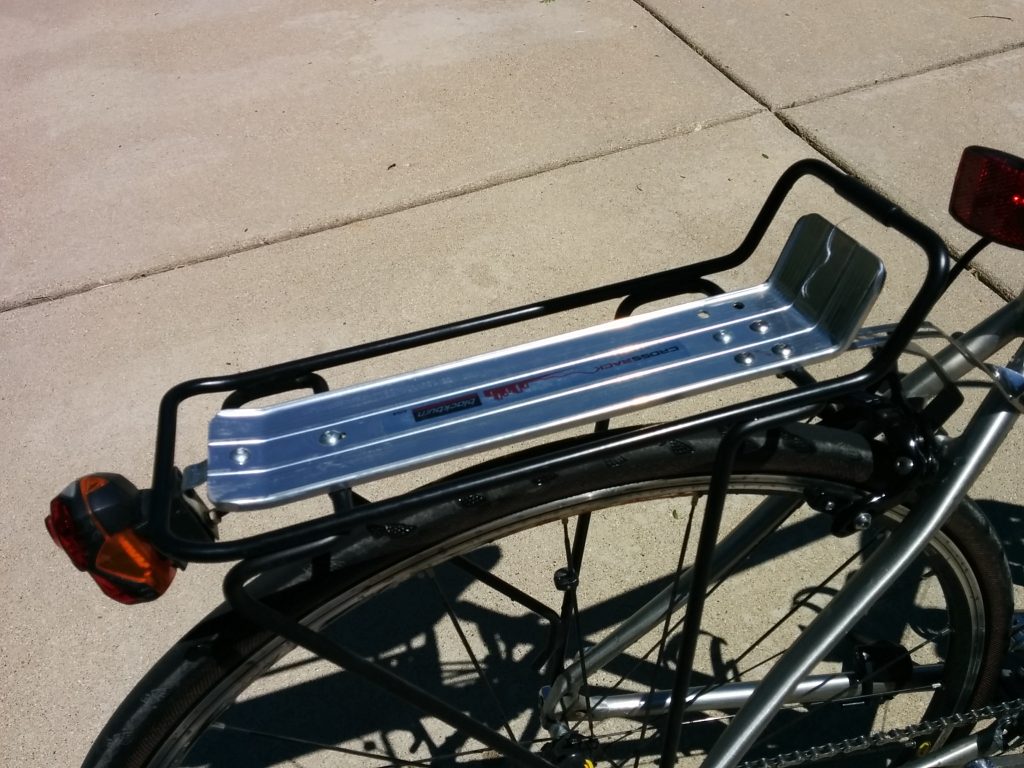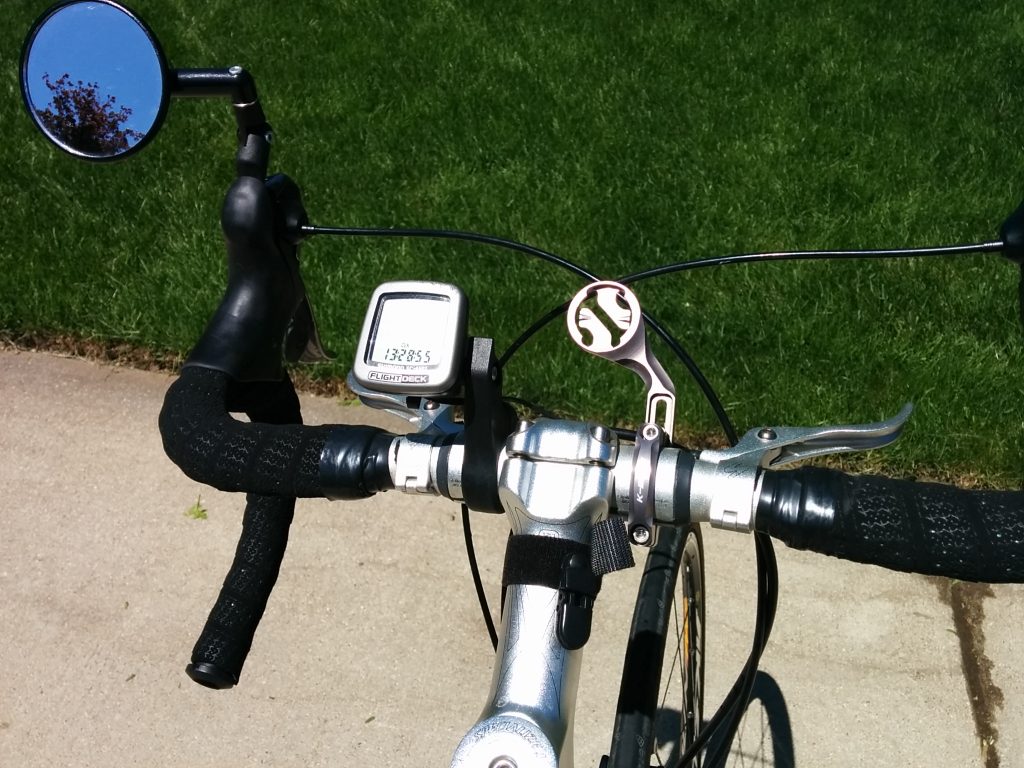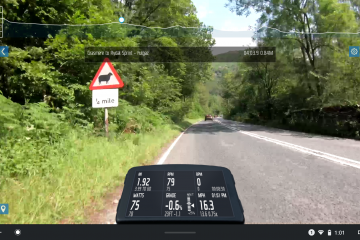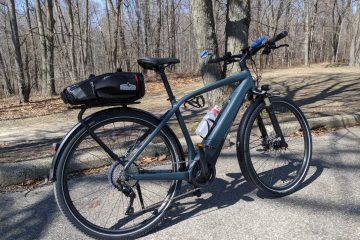In this post I’ll talk about the other components and accessories that I’ve ended up with over the years.
Saddle

Rack

At first I tried to get away with one of those racks that clamps onto the seatpost so it can be put on or left off, but those are not without their problems, such as a tendency to shift off to the side on bumpy roads. So I find that the best solution for a bike with a dedicated purpose like mine is a permanently installed rack, and the Sequoia came with the necessary mounting points on the frame. Note that I also have a taillight, which comes in handy in low-light or rainy conditions.
Handlebar Accessories

The photo gives a good view of the bike’s “cockpit” including the speedometer, GPS mount, mirror, and auxiliary levers. The speedo is a Shimano Flightdeck unit that integrates with the STI shift/brake levers that come with the 105 component group. It uses a wireless sensor on the front wheel and is wired right into the shifters; small buttons on the hoods are then used to control the display so you don’t need to take your hands off the bars to cycle through the data. Another great feature is that it has gear indicators that show graphically what ring and cog you are on, including the exact gearing (such as “39-17”) whenever you shift. As a side benefit, since the unit knows your gearing, speed, and tire diameter, it can display your calculated cadence; it’s surprisingly accurate.

The GPS mount is for my current unit, a Garmin 810. It’s a very secure mount that puts it out in front of the bars where it’s easy to read. I also have a wireless Garmin speed and cadence sensor on the left chainstay, giving me a constant cadence readout. Why a speed sensor on a GPS unit? It’s mainly for use as a backup when the GPS satellites are difficult to pick up such as in tunnels, heavy tree or cloud cover, or going through mountains.
By the way, that thingie that’s velcroed around the stem is a route-sheet clip. On rides where they give you a route sheet or book, I take a page at a time, put it in a small ziploc baggie, and clip it there on the stem where I can follow the route more easily. It’s a handy gadget, but I can’t remember where I got it.


I really like seeing what’s coming up behind me — especially on the road — and have tried about every variety of helmet, eyeglass, and bar-end mirror with generally poor results. The mirror that I am now using has proven to be a good solution. It’s made by Mirrcycle and uses some of the same parts as their popular mirror for flat-bar bikes. As you can see, it’s specifically designed to mount right onto the STI levers using existing hardware. It gives an excellent view rearward, although it is prone to some vibration on rougher road surfaces. Still, it’s the best that I’ve found.
Pedals
The pedals that I use on all my bikes use the SPD clipless system. For one thing, this means that I can use any of my shoes with any bike, but mainly I like to be able to get off and walk around occasionally during a long ride, and SPDs are the best way to go for that purpose. Most dedicated road pedal systems are difficult at best to walk in for any distance when off the bike, not to mention going into a restaurant, museum, etc. The SPD system is intended more for mountain biking, but Shimano does make a pedal which is more sleekly styled for road biking. The same goes for shoes; there are lots of heavy-duty MTB shoes out there, but it’s also possible to find models that look more like typical roadie shoes.
Kickstand
You may have noticed in the initial photos that, yes, I have a kickstand on the bike. Frankly, I’ve never understood the negative attitude that most cyclists seem to have for this device. Again, it’s not like I’m any type of weight weenie and I find it to be very useful. Maybe this goes back to my days of motorcycling when a bike falling over or laying on its side was cause for panic, but I think a stand is very convenient in not always having to lean your bike against something or find a place to lay it flat. When airing up the tires or loading the trunk bag it’s convenient to not have to be juggling the bike at the same time, and I can stop by the side of the road and get off to take a picture without having to figure out what to do with the bike. So if some riders object to sidestands, I guess that’s just their problem!
Wrapup
So if I finally have my bike to the point where everything is just right — or close to it — you’d think I’d be done for a while. But no, I still regularly get the itch for a new bike and will probably act on that by next year. Mainly there are some things getting creaky on the old Sequoia, and I’d really like something perhaps a bit lighter and definitely with disc brakes. I might also get less adventurous on my tours as I get older and will no longer have to be concerned with the steeper hills, so can opt for a more modern gearing setup.
But for now I thought that there might be some interest in what I’ve done over the last 10 years to turn an entry-level road bike into what is, for me, a first-rate light tourer.



0 Comments